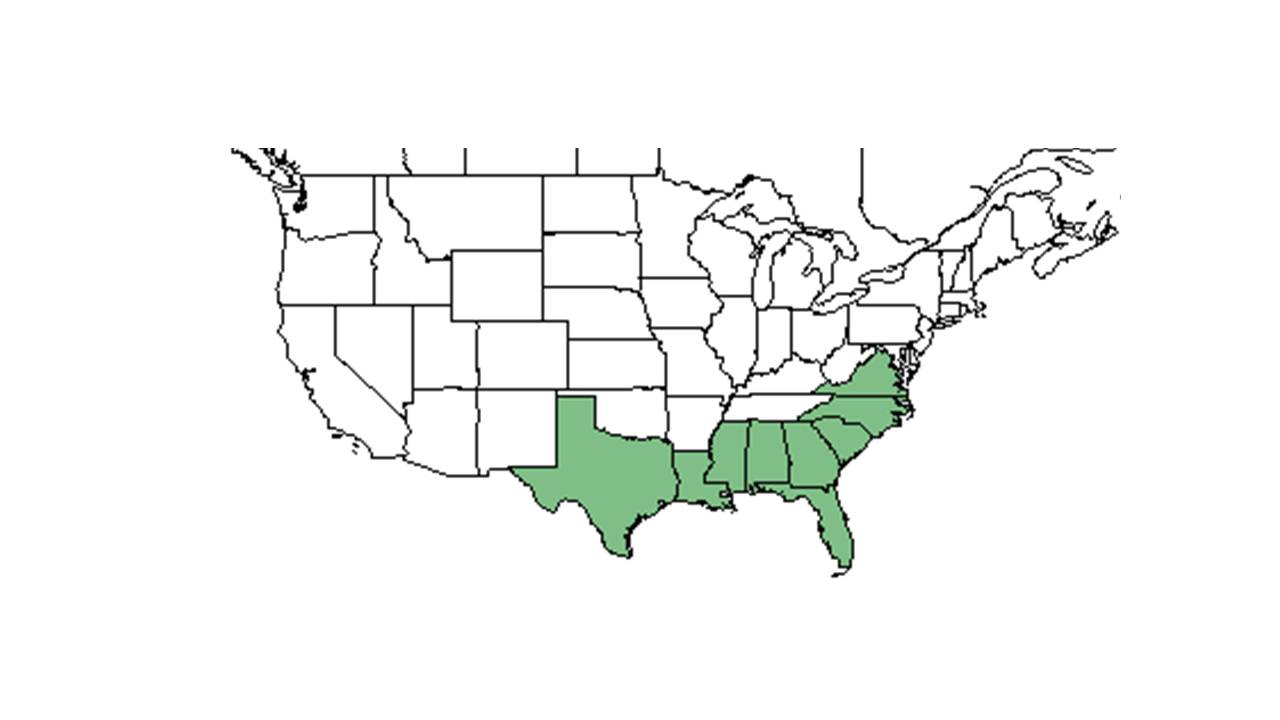Hypericum setosum
| Hypericum setosum | |
|---|---|

| |
| Photo taken by Gil Nelson | |
| Scientific classification | |
| Kingdom: | Plantae |
| Division: | Magnoliophyta - Flowering plants |
| Class: | Magnoliopsida – Dicotyledons |
| Order: | Theales |
| Family: | Clusiaceae ⁄ Guttiferae |
| Genus: | Hypericum |
| Species: | H. setosum |
| Binomial name | |
| Hypericum setosum L. | |

| |
| Natural range of Hypericum setosum from USDA NRCS Plants Database. | |
Common name: Hairy St. John's wort
Contents
Taxonomic notes
Description
Hypericum setosum is a perennial herbaceous species.
“Usually glabrous herbs or shrubs. Leaves usually punctate, simple, opposite, entire, usually sessile or subsessile, exstipulate. Inflorescence basically cymose; flowers perfect, regular, bracteates, subsessile or short-pedicellate, sepals 2, 4, or 5, persistent; petals 4 or 5, usually marcescent, yellow or pink; stamens 5-numerous, separate or connate basally forming 3-5 clusters or fascicles, filaments usually persistent; carpels 2-5, stigmas and styles separate or fused, ovary superior, 1-locular or partly or wholly 2-5 locular, placentation axile or parietal. Capsules basically ovoid, longitudinally dehiscent, styles usually persistent; seeds numerous, lustrous, areolate, cylindric or oblong. In general our species form a polymorphic complex with many intergrading taxa.” [1]
"Erect, pubescent annual or biennial, 2-7.5 dm tall, sparingly branched. Leaves ascending, elliptic lanceolate, or ovate, 1-nerved, 3-15 mm long, 2—8 mm wide, acute, base clasping, sessile. Flowers alternate or terminal, ascending branches. Sepals 5, ciliate, 3-4.5 mm long; petals 5, 4-7 mm long; stamens numerous, in clusters; stigmas capitates, styles 3 or4, separate, 1.5-2.5 mm long, ovary 1-locular. Capsules ovoid, 4-5 mm long, 2.5-3.5 mm broad seeds yellow, 0.5 mm long." [1]
Distribution
Ecology
Habitat
H. setosum occurs in moist or dry loamy sand, and seems to prefer open light conditions. [2] It can be found in pinewoods, bordering swampy depressions, and in open wiregrass flats in longleaf pinelands. [2] On the other hand, this species also appears in disturbed areas, including ditches and power line corridors. [2] Associated species include Pinus palutris and Aristida stricta. [2]
Phenology
H. setosum has been observed flowering in July, August and September, while fruiting has been observed in September and October. [2][3]
Seed bank and germination
Several short-lived perennial forbs also have a seed bank persistent for at least several years.[4]
Fire ecology
This species has been found in habitat that is often maintained by fire. [2]
Conservation and management
Cultivation and restoration
Photo Gallery
References and notes
- ↑ 1.0 1.1 Radford, Albert E., Harry E. Ahles, and C. Ritchie Bell. Manual of the Vascular Flora of the Carolinas. 1964, 1968. The University of North Carolina Press. 709-715. Print.
- ↑ 2.0 2.1 2.2 2.3 2.4 2.5 Florida State University Robert K. Godfrey Herbarium database. URL: http://herbarium.bio.fsu.edu. Last accessed: June 2014. Collectors: Loran C. Anderson, Wilson Baker, R. A. Norris, and M. Davis. States and Counties: Florida: Gadsden, Liberty, and Wakulla. Georgia: Grady and Thomas.
- ↑ Nelson, G. PanFlora: Plant data for the eastern United States with emphasis on the Southeastern Coastal Plains, Florida, and the Florida Panhandle. www.gilnelson.com/PanFlora/ Accessed: 12 DEC 2016
- ↑ Platt, W. J., S. M. Carr, et al. (2006). "Pine savanna overstorey influences on ground-cover biodiversity." Applied Vegetation Science 9: 37-50.